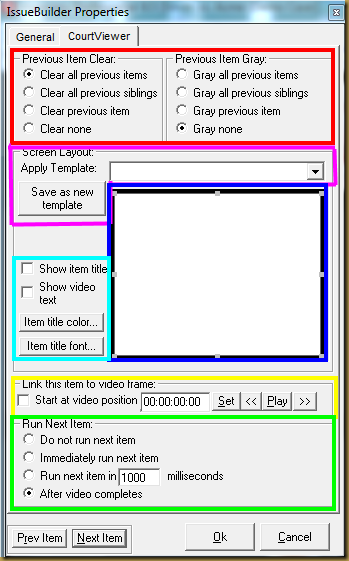The IssueBuilder (Item) Properties Window Explained
Since we will be referring to the IB Item Properties window, here it is and an explanation:Starting from the upper left.
The red rectangle indicates the Previous Item Clear options.
- What should occur to whatever is currently on the screen when this Item is processed.
The purplish rectangle indicates the Template options.
- Saving and applying templates to an Item
- Applying a template does NOTHING more than set the properties on this window.
The darker blue rectangle represents the presentation screen.
- How this Item will appear on the screen when displayed.
The items displayed in the light blue rectangle will change depending on specific item.
- If and how text will be displayed.
- Whether or not the Item Title will be displayed on the screen.
The green rectangle indicates the Video linking options.
- Used to link this Item to a specific point in a video playback.
And finally the yellow rectangle indicates the Run Next Item options.
- When this Item is processed, when should the next Item in the IB be processed.
The two buttons in the lower left will step forwards and backwards through the items in your IssueBuilder.
Please post any questions here as comments; remember, if you have a question so does someone else. I will try to answer them as quickly as possible.
Thanks, and let’s get started.
chuck

